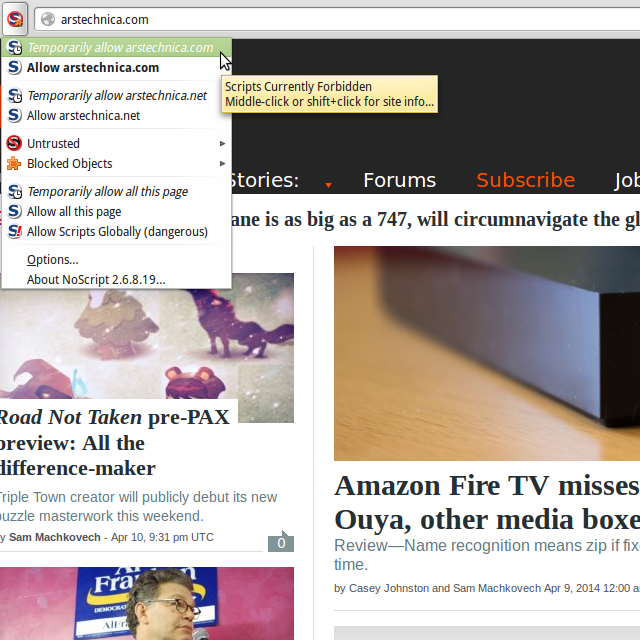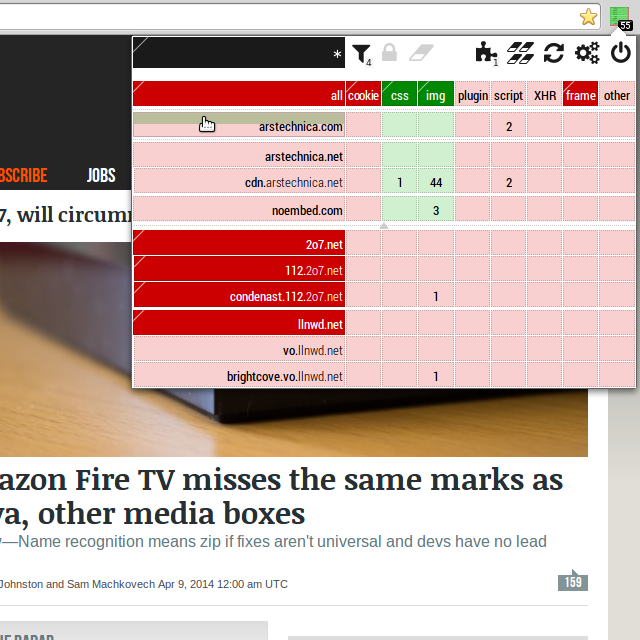-
Notifications
You must be signed in to change notification settings - Fork 83
HTTP Switchboard "seems to need more micromanagement" compared to NoScript
Not really. I supposed the erroneous impression stems from all the cells in the matrix. It does not require more management. If a user wants to allow one script from one page, one click is sufficient with HTTP Switchboard, just like NoScript. Admittedly though, if a user wants to allow one or more scripts permanently, an extra click is required, to tell HTTPSB to persist the whitelisted cells in the matrix, since by design, all permissions are temporary -- with the benefit that as opposed to NoScript, there is no need to duplicate every hostname in the menu (one for temporary permission, one for permanent permission.)
####Consider NoScript:

####And now HTTPSB:

In both case, one single click was required to enable scripts temporarily from arstechnica.com.
From the two screenshots, one can see however that HTTPSB refers to more hostnames than NoScript: It is because HTTPSB will report all net traffic, i.e. not just that of scripts on the page. In the example above, one can see that with out-of-the-box settings, HTTPSB also blocked a tracking pixel from condenast.112.2o7.net.
Of course, the more scripts allowed by a user, the more tracking pixels and other annoyances are going to be reported by HTTPSB. To get the same level of information and control, a user would have to also install Request Policy aside NoScript.